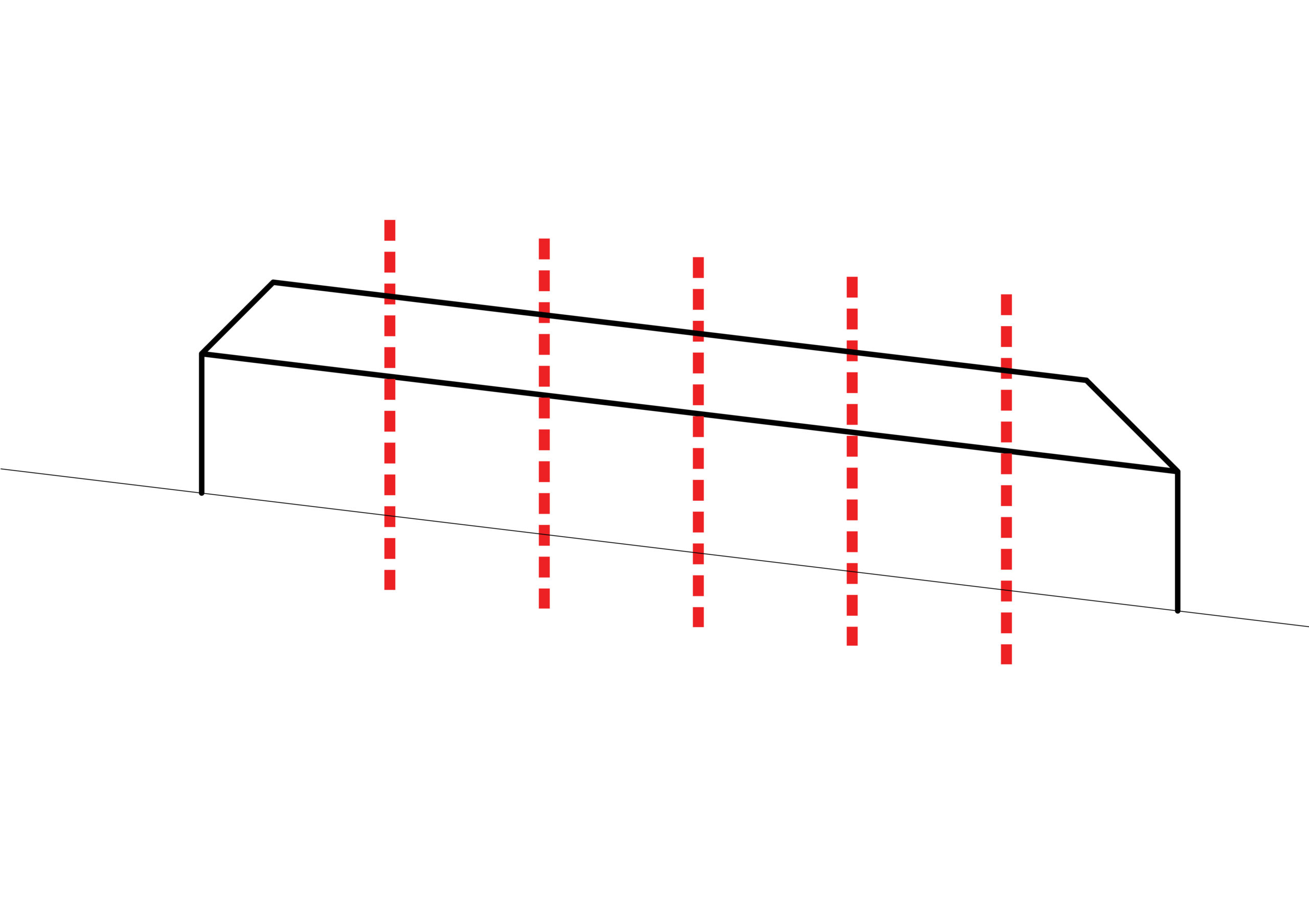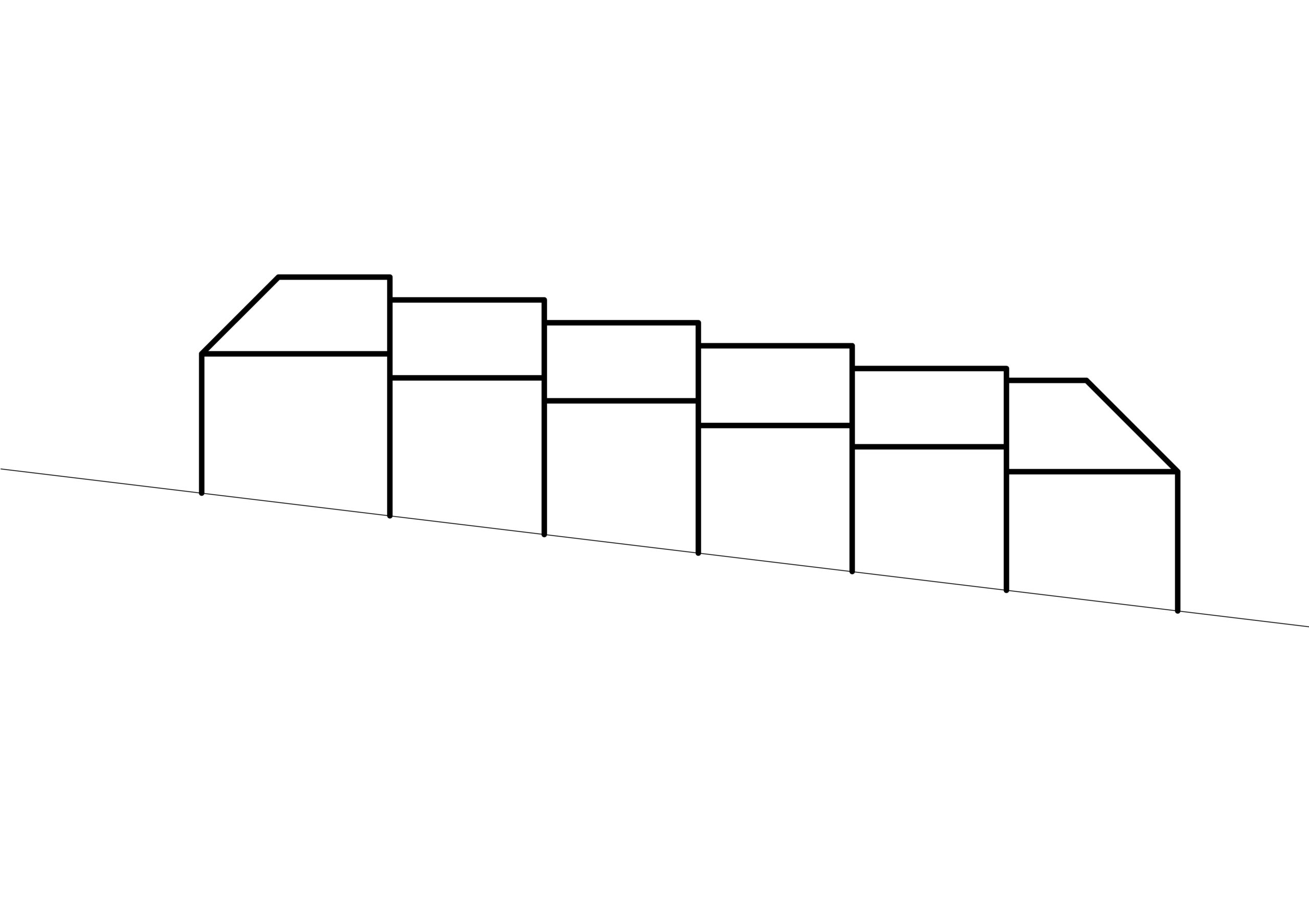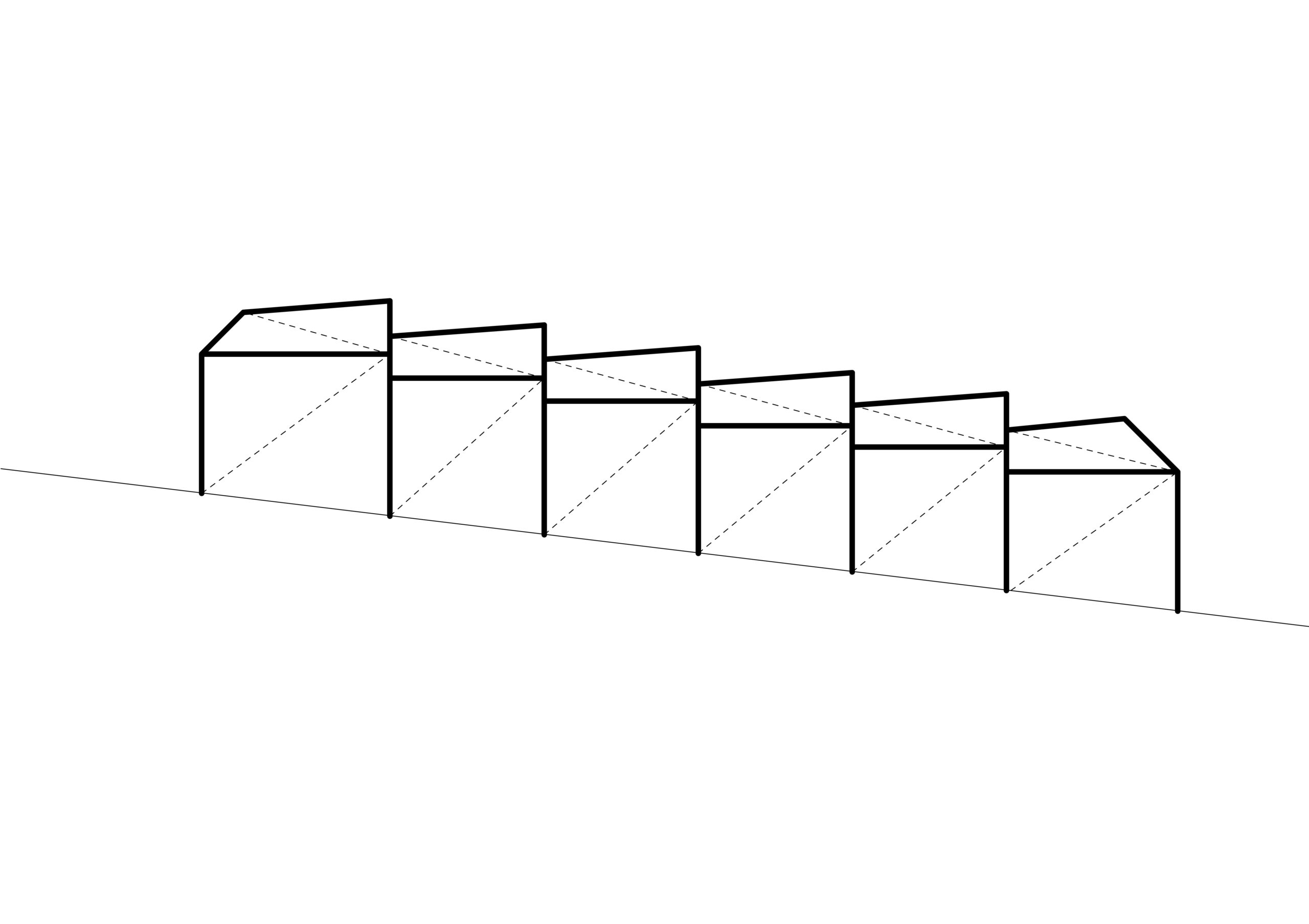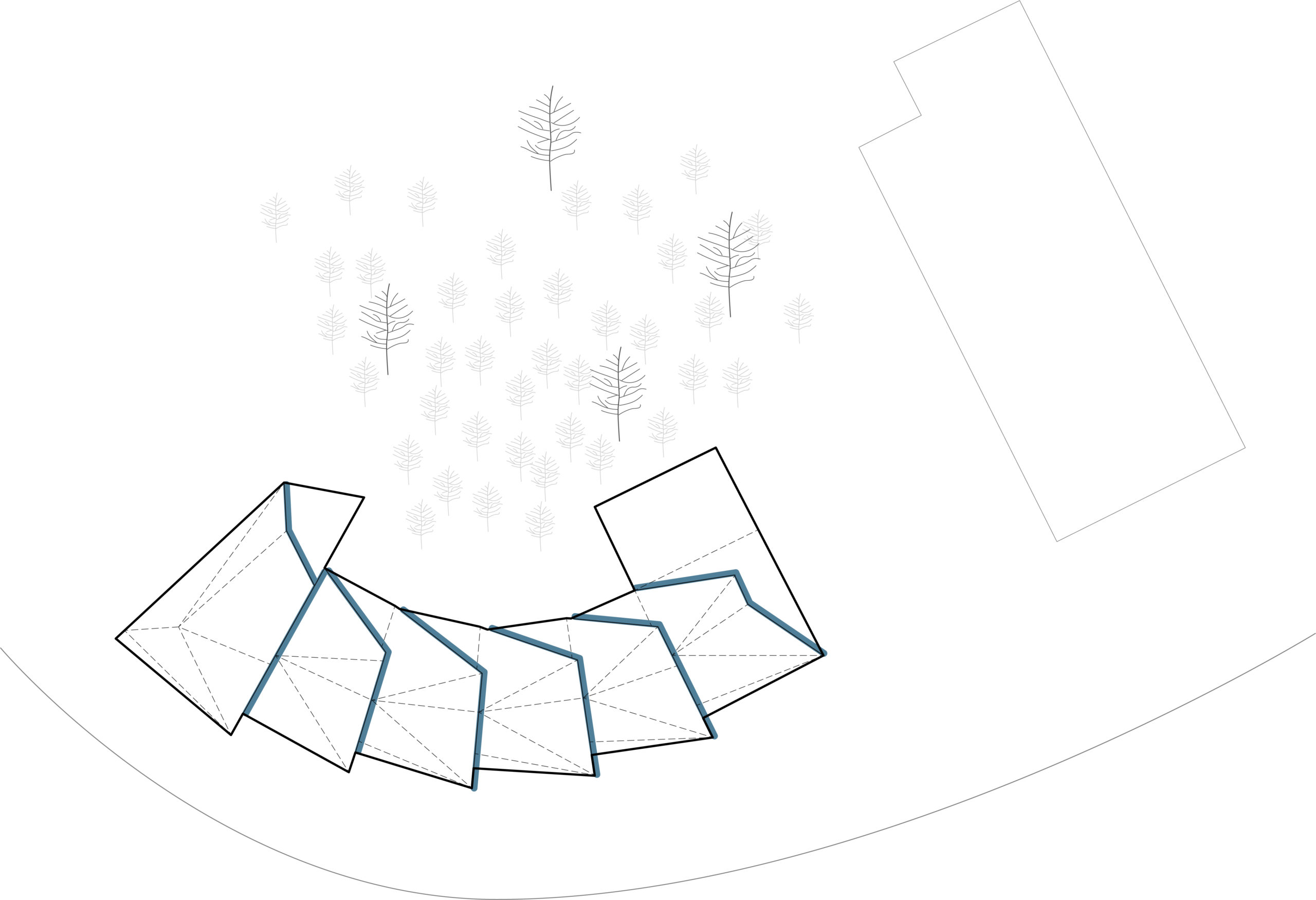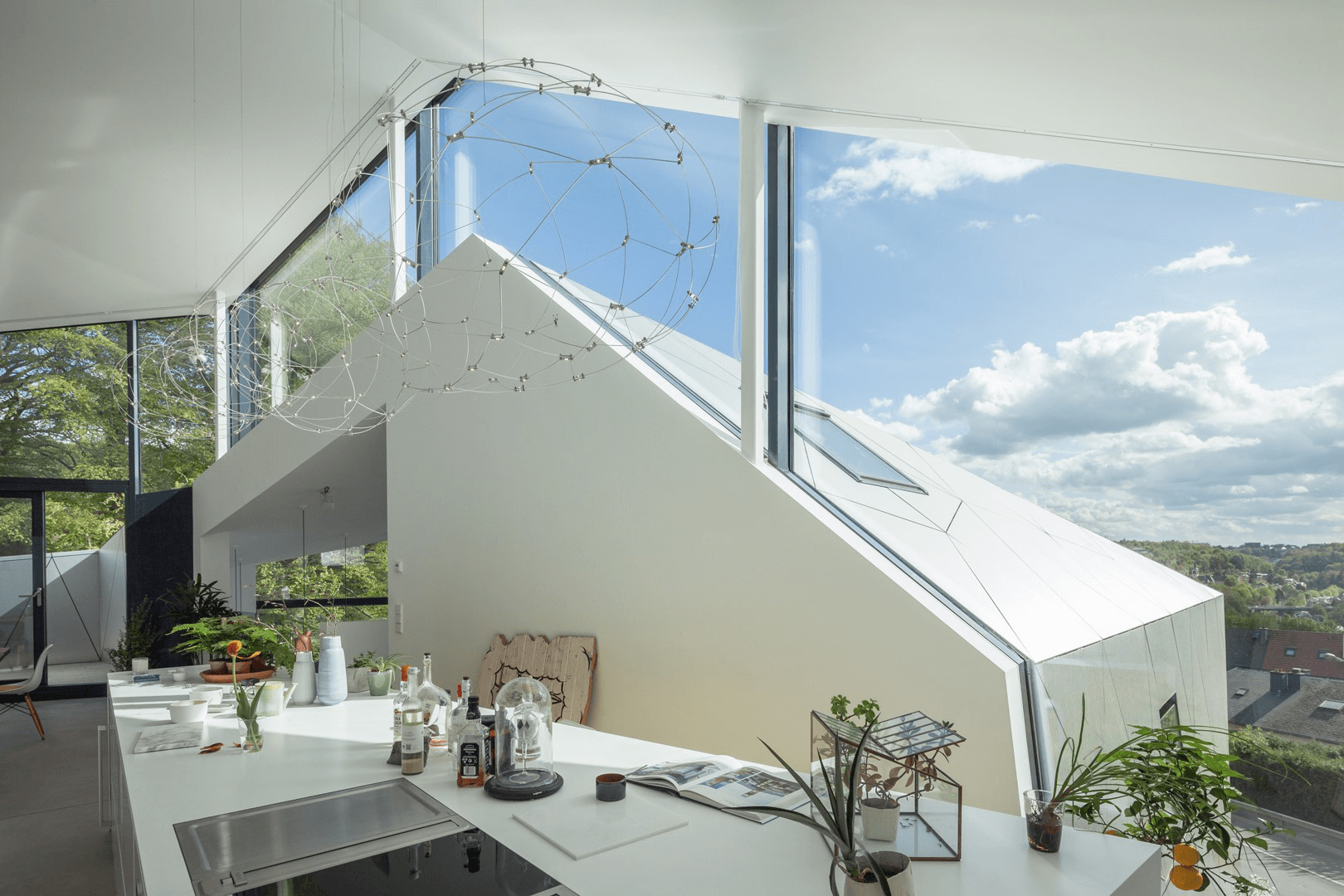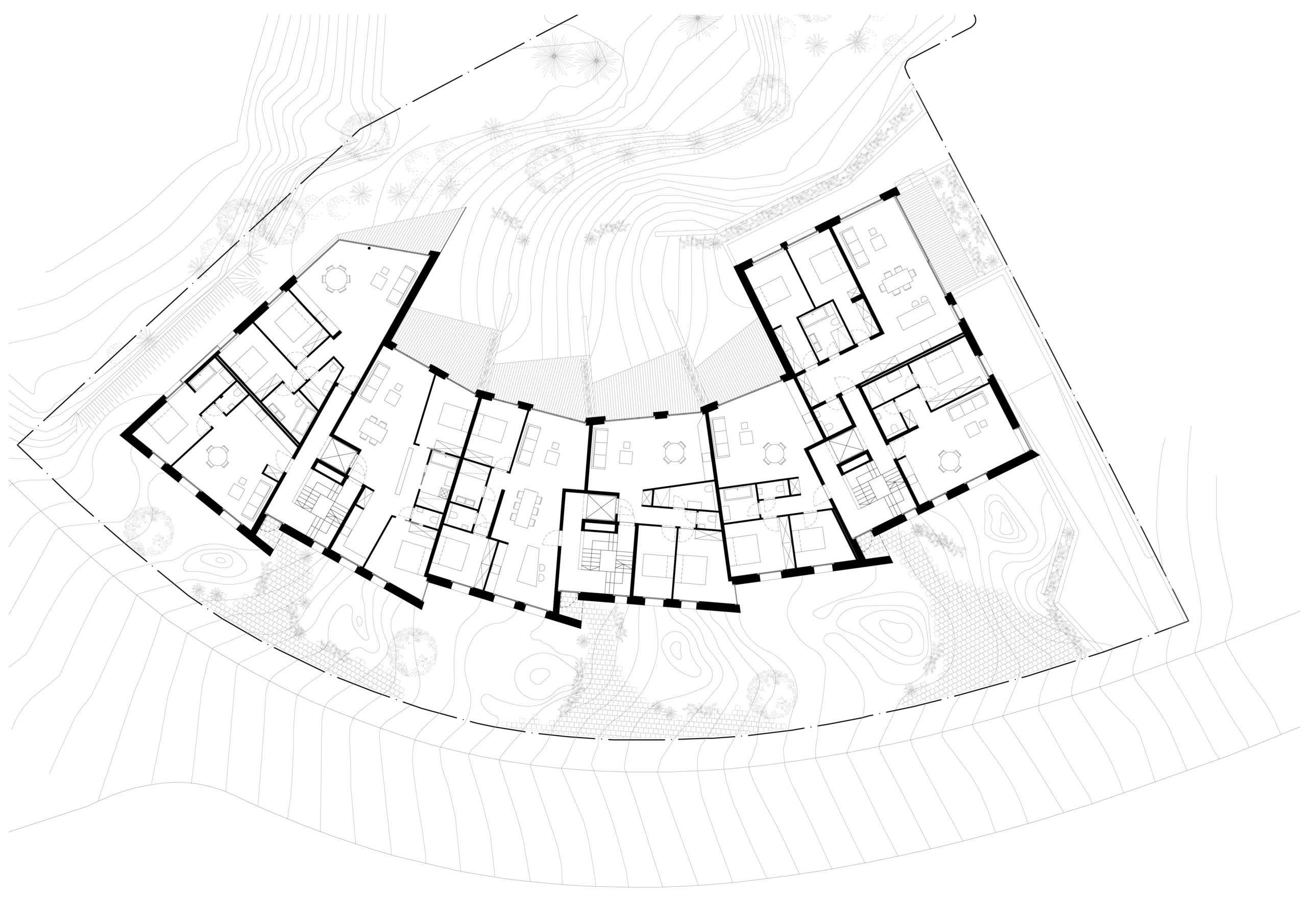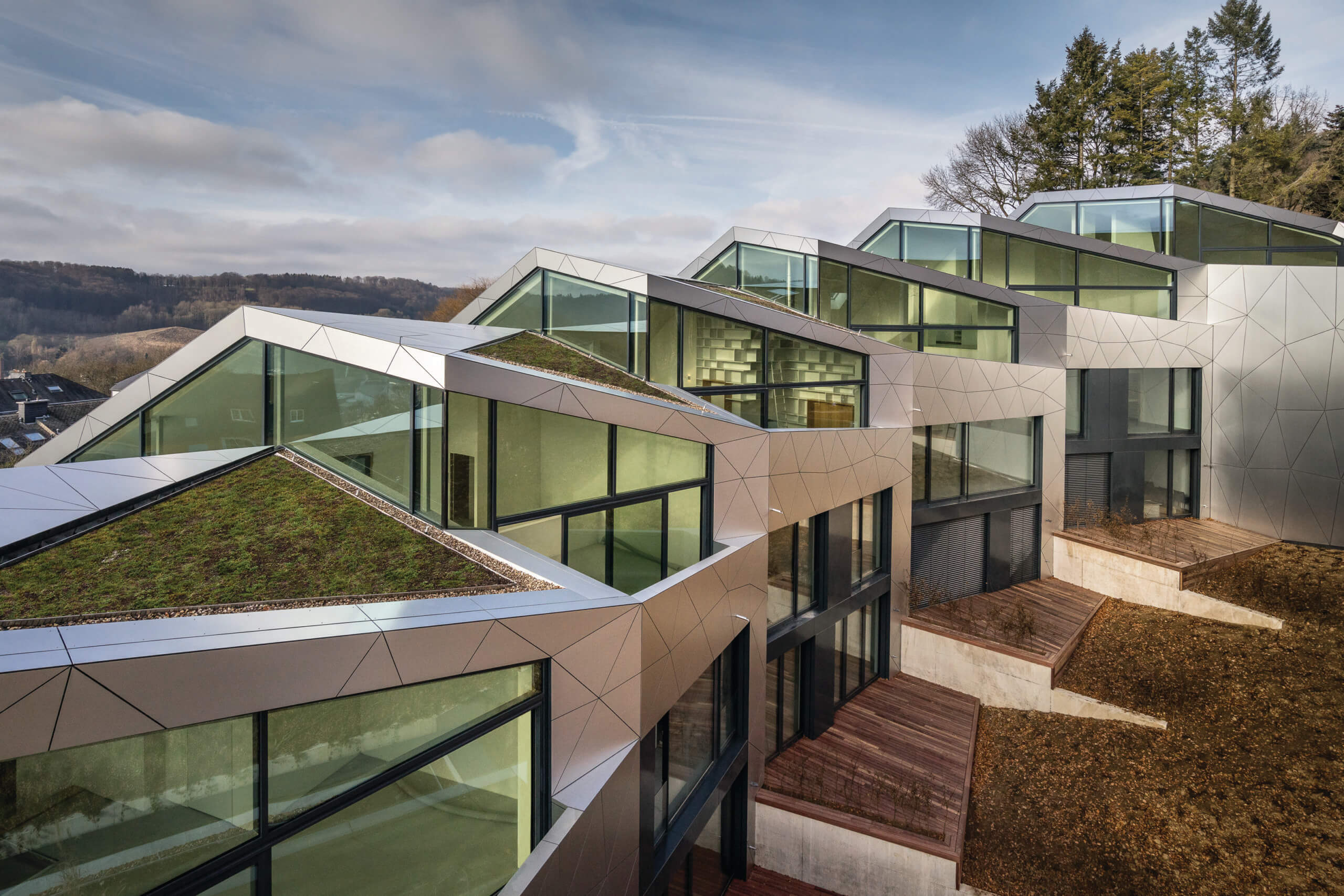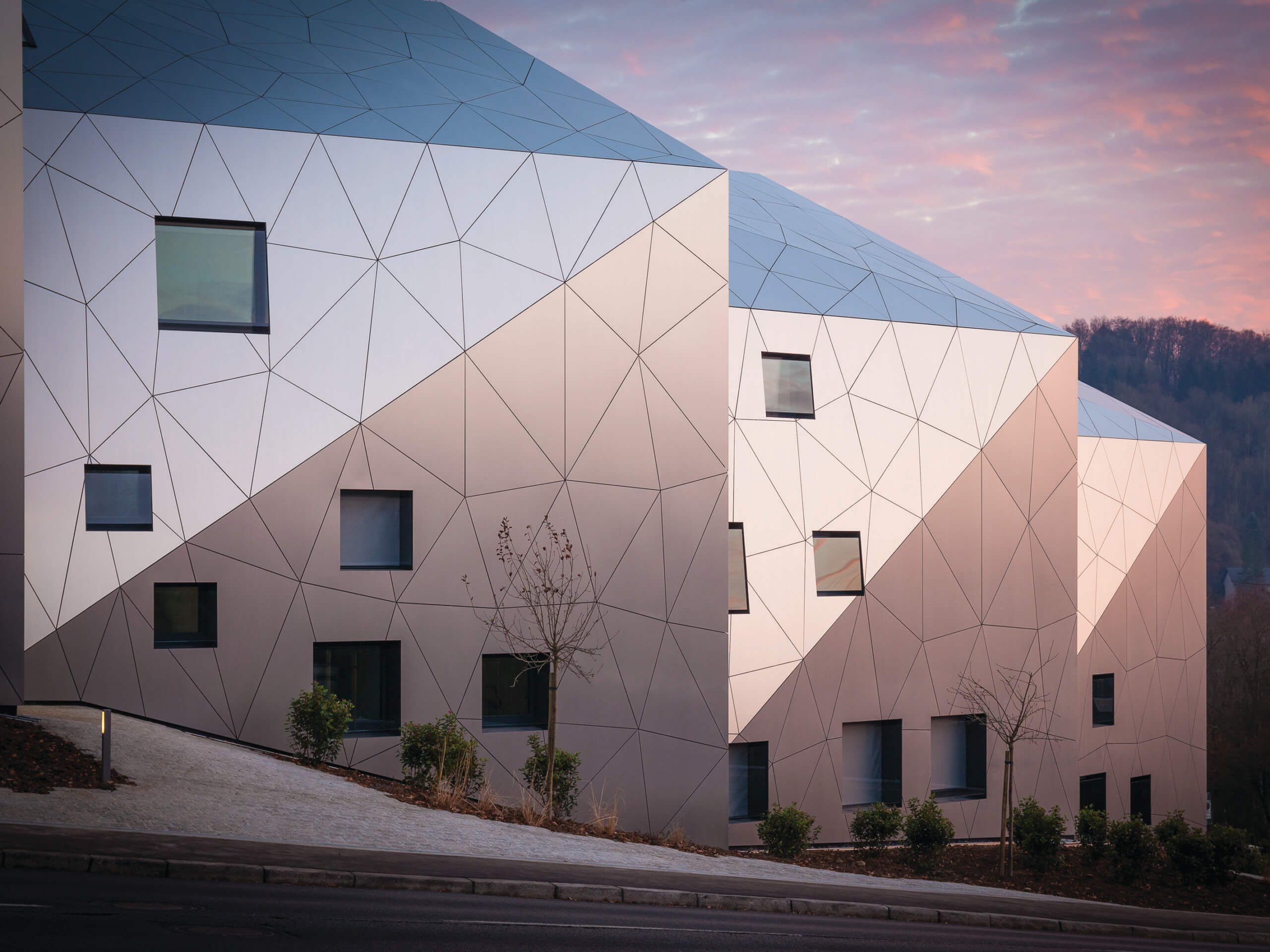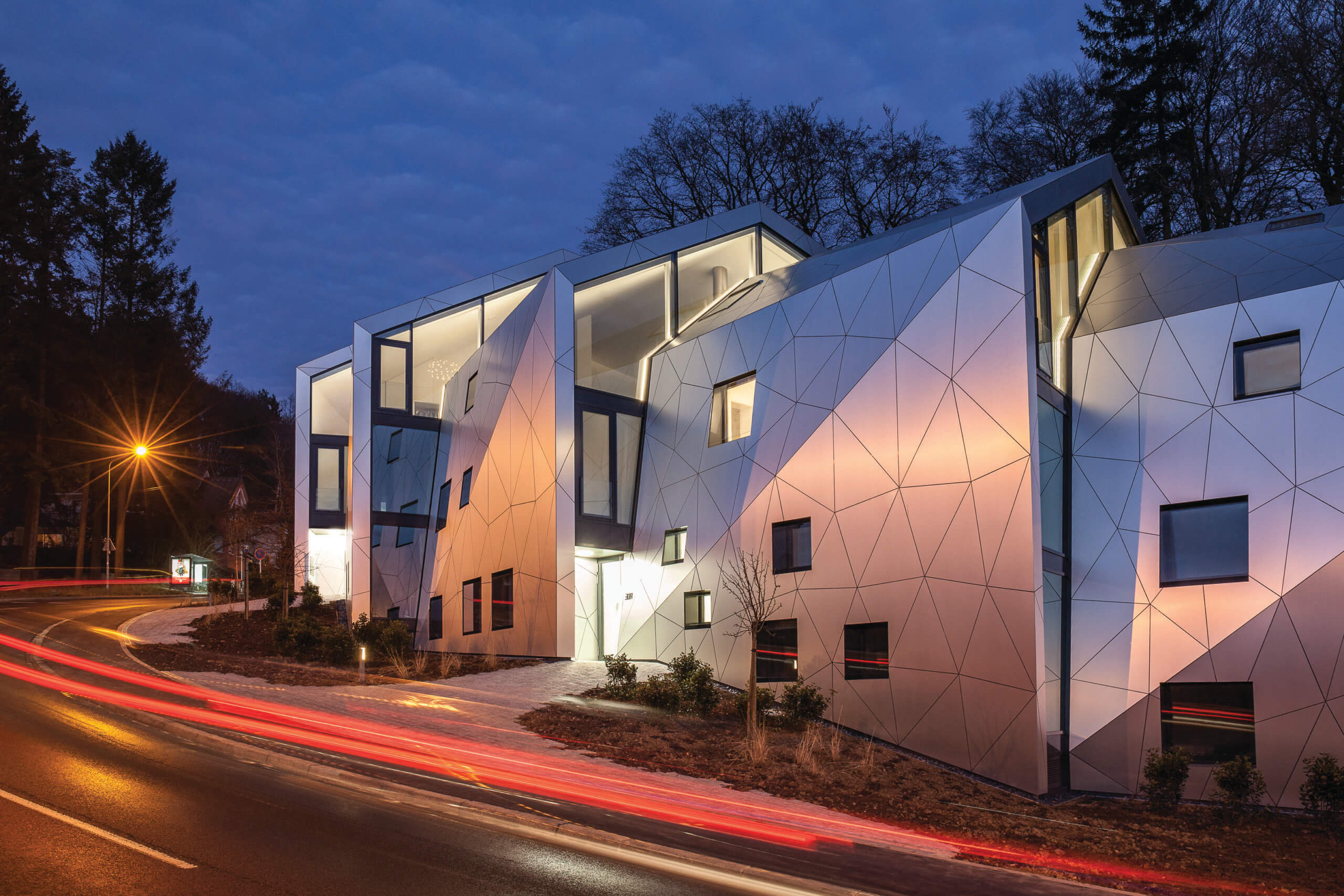Individual and Collective
Collective housing - Dommeldange, Luxembourg

Award Winner
Questioning the typology of collective housing
The perception of hous-e-ing is translated here by combining the comfort of the individual house with the benefits of compact housing whilst blurring the boundaries in-between.
Embracing the natural settings that shaped the building
The specific topography in a curved and steep street with 10 meters of height difference and a couple of three-century-old trees that are classified as national monuments defined this unique design.
The building overcomes the challenges of the urban context as it preserves the required density, while nurturing the feeling of belonging, identity and community simultaneously.
“The importance of interaction between architecture and it’s environment.
”
Shahram Agaajani Architect, Founding Partner
The amount of the entering of natural light and opening the panoramic views towards the landscape is optimized by volume splitting and shifting plans.
A visual connection is created with the sky through the openings while allowing you to keep your intimate privacy.
It is all about finding the right balance between your own intimacy and collective interactions.
We created spaces that evoke coziness, safety, and conviviality through visual and acoustic privacy. But at the same time, you can always have the possibility to meet and get to know your neighbors in a common shared indoor space. The facilities such as the common kitchen or the leisure room are designed and intended to bring a social value by improving interaction and a sense of community living. On individual voluntary bases, while preserving the privacy and peace of others, you can both experience individuality and community.
The building is made of a massive structure of reinforced concrete, faced with a ventilated facade made of triangular aluminum panels. The thermal insulation of the walls consists of mineral fiber. The openings are filled with three-layered glass in an aluminum frame. The large glass elements are specially coated with anti-UV film to prevent the building from overheating.
An important aspect of the energy concept of the building is the orientation; the large openings appear mainly on the south and eastern facades, whereas the north facade is mostly closed. According to Luxembourg laws the building is classified as a low-energy building (Class B-B).
A centralized ventilation system as well as solar panels for hot water production are also included in order to optimize the energy efficiency of the project.
The used façade materials have been chosen in order to allow for the minimal maintenance.
Location
Dommeldange, Luxembourg
External Collaborator
Simon Christiansen & Associés | Sitlux
Award
Nominated for EU Mies Award / Bauhärepräis 2020
- Prix Spécial du Jury




